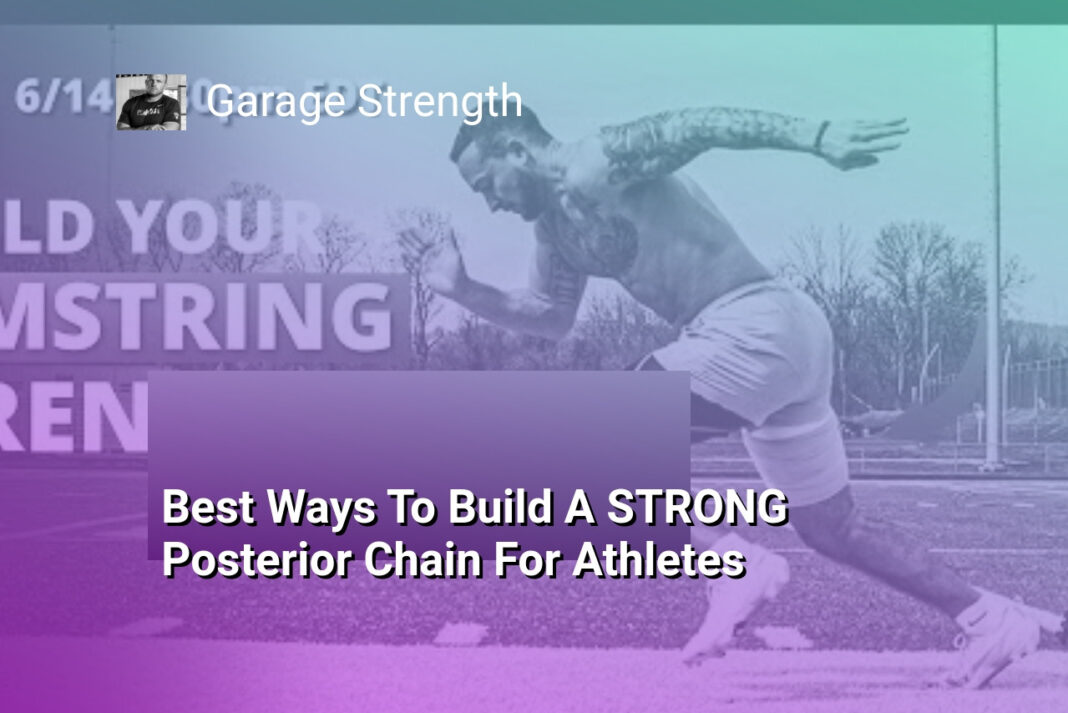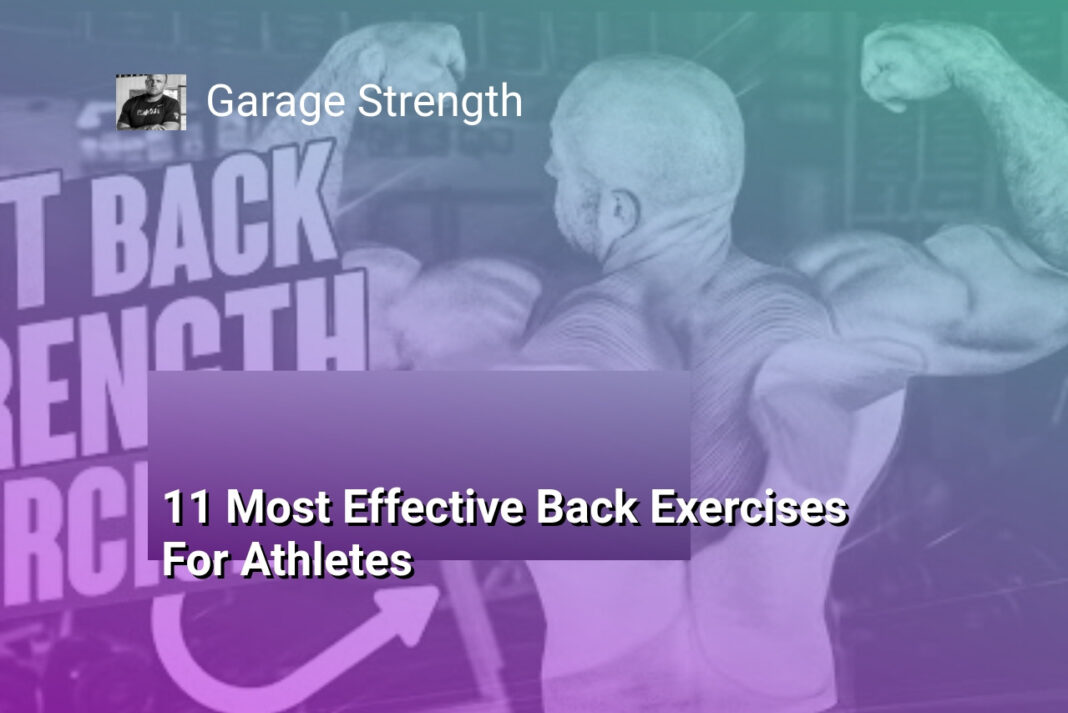The Bottom Line:
Here is a summary in the requested format:
- The posterior chain refers to the muscles at the back of the body, including the glutes, hamstrings, lower back, and calves, which are crucial for athletic performance.
- Assessing the strength and function of the posterior chain is important for different sports, as the specific demands and loading patterns vary. Weak posterior chain can hinder performance in exercises like squats, deadlifts, and sprinting.
- Single-leg exercises like the single-leg squat are highly effective for targeting and strengthening the posterior chain, especially the glutes and hamstrings, which can lead to improved movement mechanics and explosiveness.
- Heavier compound exercises like squats, deadlifts, and Romanian deadlifts are also essential for building overall posterior chain strength, particularly for athletes in strength-based sports.
- The specific posterior chain training should be tailored to the demands of the athlete’s sport, with a focus on developing the necessary strength, power, and movement patterns required for optimal performance.
Understanding the Posterior Chain
The Importance of the Posterior Chain
The posterior chain, consisting of the glutes, hamstrings, and lower back muscles, is a critical component of athletic performance. This interconnected group of muscles is responsible for a wide range of functions, including hip extension, knee flexion, pelvic stability, and lateral movement. Understanding the role of the posterior chain and how to effectively train it is essential for athletes looking to improve their overall strength, power, and explosiveness.
Assessing Posterior Chain Strength
Evaluating an athlete’s posterior chain strength can provide valuable insights into their overall athletic potential. Exercises such as the single-leg squat, high-bar back squat, and Romanian deadlift (RDL) can be used to assess an athlete’s posterior chain strength. If an athlete struggles with these movements, it may indicate a weakness in the glutes, hamstrings, or lower back, which can hinder their performance in a variety of sports.
Sport-Specific Posterior Chain Training
The specific demands of a sport will dictate the training approach for the posterior chain. For example, a shot putter or offensive lineman may require a greater emphasis on maximal strength, while a long-distance runner or swimmer may need to focus more on muscular endurance and power production at lower loads. By understanding the sport-specific requirements, coaches and trainers can design targeted posterior chain exercises and progressions to optimize athletic performance.
The posterior chain is a crucial component of athletic success, and its development should be a priority for any athlete looking to improve their overall strength, power, and movement efficiency. By assessing an athlete’s posterior chain strength, implementing sport-specific training strategies, and continuously challenging the muscles of the posterior chain, coaches and trainers can help their athletes reach new heights of athletic performance.
Identifying Key Muscle Groups
Maximizing Posterior Chain Strength
The posterior chain, comprising the glutes, hamstrings, and lower back muscles, plays a crucial role in athletic performance. Identifying and understanding the key muscle groups within this chain is essential for developing a powerful and well-rounded physique.
The Glutes: Powerhouses of the Posterior Chain
The glutes, or gluteal muscles, are the primary drivers of hip extension and are responsible for generating significant force during various athletic movements. Strengthening the glutes is crucial for improving acceleration, jumping ability, and overall lower-body power. Exercises such as squats, deadlifts, and hip thrusts are effective in targeting and developing the glutes.
The Hamstrings: Versatile Muscle Group
The hamstrings, located at the back of the thigh, are responsible for knee flexion and hip extension. They work in tandem with the glutes to power movements like sprinting, jumping, and changing direction. Incorporating exercises like Romanian deadlifts, leg curls, and Nordic hamstring curls can help build strength and resilience in the hamstring muscles.
The Lower Back: Stabilizing the Spine
The lower back muscles, including the erector spinae, play a vital role in maintaining spinal stability and proper posture during athletic activities. These muscles work in conjunction with the glutes and hamstrings to transfer power from the lower body to the upper body. Exercises like back extensions and deadlifts can help strengthen the lower back and improve overall posterior chain function.
By understanding the key muscle groups that make up the posterior chain, athletes can develop targeted training programs to build a powerful and resilient physique. Incorporating a balanced approach that emphasizes the glutes, hamstrings, and lower back can lead to significant improvements in athletic performance and injury prevention.
Posterior Chain’s Role in Athletic Movements
The Importance of the Posterior Chain in Athletic Movements
The posterior chain, which encompasses the muscles of the glutes, hamstrings, and lower back, plays a crucial role in athletic movements and overall performance. These muscle groups work together to facilitate key functions such as hip extension, knee flexion, and pelvic stability, all of which are essential for a wide range of athletic activities.
Maximizing Posterior Chain Strength
Developing maximal strength in the posterior chain is crucial for athletes across various sports. Exercises like the single-leg squat, high-bar back squat, low-bar back squat, and Romanian deadlift (RDL) can effectively target and strengthen these muscle groups. By assessing an athlete’s ability to perform these exercises, coaches can identify potential weaknesses in the posterior chain and implement targeted training to address them.
Sport-Specific Posterior Chain Considerations
The specific demands and movement patterns of different sports necessitate a tailored approach to posterior chain training. For example, a shot putter or offensive lineman may require a higher load capacity in the posterior chain compared to a long-distance runner or swimmer. By understanding the unique requirements of each sport, coaches can design posterior chain training programs that optimize athletic performance and minimize the risk of injury.
In the case of a long-distance runner or triathlete, the posterior chain may only need to support a load of approximately 50% of the athlete’s body weight. Conversely, a shot putter or offensive lineman may need to demonstrate the ability to move significantly heavier loads. By recognizing these sport-specific differences, coaches can tailor their training approaches to ensure that athletes are adequately prepared for the demands of their respective sports.
Ultimately, the posterior chain’s role in athletic movements is multifaceted and requires a comprehensive understanding of both general strength training principles and sport-specific considerations. By prioritizing the development of a powerful posterior chain, coaches and athletes can unlock enhanced performance, improved movement efficiency, and a reduced risk of injury.
Assessing Posterior Chain Strength
Assessing Posterior Chain Strength
Evaluating the strength of the posterior chain is crucial for optimizing athletic performance. The posterior chain encompasses the major muscle groups responsible for hip extension, knee flexion, and spinal stabilization, including the glutes, hamstrings, and lower back. Assessing the strength and function of these muscle groups can provide valuable insights into an athlete’s overall strength, power, and movement patterns.
Strength Assessments
One of the primary ways to assess posterior chain strength is through various strength-based exercises and tests. Single-leg squats, barbell back squats, and Romanian deadlifts (RDLs) are all excellent exercises for evaluating posterior chain strength. These movements require the coordinated effort of the glutes, hamstrings, and lower back to maintain proper form and generate force.
By analyzing an athlete’s performance on these exercises, coaches and trainers can identify potential weaknesses or imbalances within the posterior chain. For example, if an athlete struggles with single-leg squats or exhibits poor form on barbell back squats, it may indicate a lack of glute or hamstring strength, as well as core stability issues.
Sport-Specific Considerations
When assessing posterior chain strength, it’s crucial to consider the specific demands of the athlete’s sport. The strength requirements for a shot putter, for instance, may differ significantly from those of a long-distance runner or a wrestler. Factors such as the range of motion, pattern, and load of the posterior chain movements should be evaluated in the context of the athlete’s sport.
For example, a shot putter may require greater maximal strength in the posterior chain to generate powerful hip extension during the throwing motion, while a long-distance runner may need sufficient endurance and relative strength to maintain proper form and efficiency throughout their event. By tailoring the assessment to the athlete’s sport, coaches can better identify and address the specific needs of the posterior chain.
By thoroughly assessing posterior chain strength and addressing any identified weaknesses, coaches and trainers can help athletes develop a powerful and resilient posterior chain, which is essential for optimal athletic performance across a wide range of sports.
Developing a Targeted Training Approach
Optimizing Posterior Chain Strength for Sport-Specific Demands
When developing a targeted training approach for the posterior chain, it’s crucial to consider the specific demands of the athlete’s sport. The posterior chain, which encompasses the glutes, hamstrings, and lower back, plays a vital role in various athletic movements, such as hip extension, knee flexion, and pelvic stabilization. However, the specific requirements can vary significantly between different sports.
Assessing Sport-Specific Posterior Chain Needs
To effectively train the posterior chain, it’s important to first assess the sport-specific demands. For example, a shot putter may require maximal strength in the posterior chain to generate powerful hip extension during the throwing motion, while a long-distance runner may need endurance and efficient movement patterns to maintain proper form over extended periods. By understanding the unique requirements of the athlete’s sport, you can tailor the training program to address those specific needs.
Implementing Targeted Exercises and Progressions
Once the sport-specific demands have been identified, the next step is to implement targeted exercises and progressions to address any weaknesses or imbalances in the posterior chain. This may involve incorporating exercises like single-leg squats, Romanian deadlifts, and back extensions, which can help to develop strength, power, and stability in the targeted muscle groups. Additionally, it’s important to consider the appropriate load, range of motion, and movement patterns that align with the athlete’s sport-specific requirements.
By developing a targeted training approach that takes into account the unique demands of the athlete’s sport, you can help to build a powerful and resilient posterior chain that supports optimal athletic performance.





